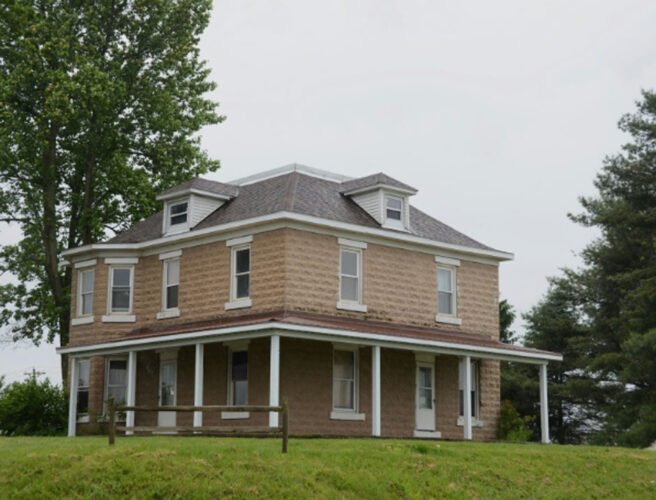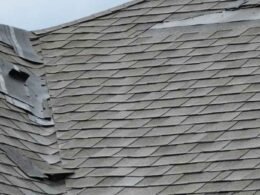Have you noticed a stain creeping up your walls or a subtle musty odour lurking in your basement? These minor signs might be the silent whispers that moisture has occupied your home, warns BanCal Properties team. While it may initially seem harmless, unchecked humidity can impact your home’s structure, appearance, and health. Let’s dive deep into understanding moisture, how to prevent it, and the importance of proactive measures in defence against it.
Homeownership comes with a long list of responsibilities, but few issues are more important (and often overlooked) than moisture prevention. Moisture is one of the most common culprits behind various household problems, yet many people don’t recognize its impact until it’s too late. From structural damage to hazardous mould growth, excess moisture can jeopardize your home’s safety, comfort, and value. By thoroughly understanding the risks of moisture—and learning how to detect, prevent, and fix its effects, you can save yourself from costly repairs down the road.
Whether you live in a high-humidity area or a cold climate prone to condensation, defending against moisture should be a high priority. Let’s look at how moisture invades homes, what damage it can inflict, and what steps you can take to keep your home dry, comfortable, and free from harm.

Photo by Roger Starnes Sr on Unsplash
Understanding Moisture
Sources: Where Does Moisture Come From?
Moisture doesn’t magically appear—it sneaks into your home through multiple sources, many of which aren’t immediately apparent. Here are the most common ways excess moisture can infiltrate homes:
1. Humidity
Many regions experience high humidity levels that can condense on surfaces, contributing to mould growth and other issues. Cooking, showering, and even breathing can increase indoor humidity levels. You might notice foggy windows or clammy air as early warning signs.
2. Water Leaks
Dripping faucets, damaged pipes, or leaks in your roof can introduce a steady stream of moisture into the environment. These hidden issues often go unnoticed until significant damage has occurred.
3. Poor Ventilation
Without proper airflow, moisture builds up in bathrooms, kitchens, basements, and other enclosed spaces. Areas that experience frequent water use (like your bathroom) are especially vulnerable.
Effects of Moisture: Why Worry?
Moisture might seem harmless—after all, it’s just water. But once it gains an unwelcome foothold, it can wreak havoc in your home. Here are the key effects of moisture buildup:
1. Mould Growth
Mould can harm indoor air quality and cause respiratory issues, especially for those with allergies or asthma. Statistics reveal that 40% of American homes have mould issues, and the numbers are likely similar elsewhere.
2. Structural Damage
Prolonged exposure to moisture can slowly weaken a home’s structure. Unchecked moisture can cause rotting wood, corroded metal, and compromised foundations.
3. Health Risks
Moist environments contribute to allergens, moulds, and bacteria, leading to sinus infections, sore throats, and other respiratory problems. Moisture-damaged home components can inadvertently affect your family’s health.
Prevention Strategies
Stopping moisture from entering your home is far more effective—and affordable—than dealing with damages after the fact. Most moisture prevention strategies are simple yet incredibly effective.
Ventilation: Keeping Airflow in Check
Proper ventilation is your first line of defence in combating moisture buildup.
1. Use Exhaust Fans
Install exhaust fans in bathrooms and kitchens to remove moisture-laden air from showers and cooking activities. Run them regularly when these areas are in use.
2. Invest in Dehumidifiers
High humidity levels often require an extra solution: dehumidifiers. These devices pull moisture from the air, controlling indoor humidity levels.
3. Windows and Cross-Breezes
Open windows or use fans to circulate air in moisture-prone areas. Proper airflow helps prevent condensation.
Waterproofing: Keeping Water Out
Waterproofing is essential for protecting vulnerable areas like basements. Basement waterproofing services in Toronto and similar cities are widely available to help keep your home dry year-round.
1. Seal Cracks
Look for cracks in your foundation and seal them promptly. Water can seep through even the tiniest opening.
2. Install Sump Pumps
A sump pump is necessary for homes with basements, especially in flood-prone regions. Sump pumps remove collected water before it can cause damage.
Maintenance: The Proactive Approach
Regular upkeep goes a long way in preventing moisture problems.
1. Plumbing Checks
Inspect your pipes, drains, and faucets regularly. Promptly fix any leaks to prevent them from escalating into bigger problems.
2. Clean Gutters
Clogged gutters can trap water and lead to leaks. Cleaning them twice a year ensures proper water drainage away from your home.
Moisture Detection
Signs to Look For
Identifying moisture early can save you from extensive damage. Here are the top warning signals:
- Stains on Walls or Ceilings: Water stains are among the most apparent signs of a moisture problem.
- Musty Odors: A damp, earthy smell is a classic indication of mould or mildew caused by excessive moisture.
- Peeling Paint or Wall Paper: Moisture behind surfaces can cause bubbling or peeling over time.
Tools to Help Detect Moisture
For a more thorough assessment, modern tools can give precise moisture readings:
- Moisture Meters: These handheld devices measure the moisture content in walls, floors, and other materials.
- Infrared Cameras: Detect temperature anomalies that suggest moisture presence behind walls and ceilings.
Solutions for Existing Issues
What if you already have a moisture problem and need to act quickly? Here’s how to tackle common moisture-related issues:
Mold Remediation
DIY vs. Professional Help
Minor mould infestations can often be handled with DIY products, such as vinegar or specialized mould-killing sprays. Toronto foundation repair experts can also assess whether mould is linked to structural moisture issues if you live in Toronto.
Repairing Water Damage
Drying Areas
Start thoroughly drying the affected areas with fans, heaters, or dehumidifiers.
Replacing Materials
If mould or rot has compromised your drywall or flooring, it’s best to replace the affected materials entirely to ensure safety and stability.
Final Thoughts
Moisture is inarguably one of your home’s most silent yet pervasive enemies, but you can easily defend against it by taking proactive steps. From proper ventilation to basement waterproofing services in Toronto, numerous options exist to protect your home and maintain its long-term health.
Early detection and prevention are key to avoiding the high costs and health risks of moisture damage. Your home is your sanctuary—keep it dry, safe, and secure.









